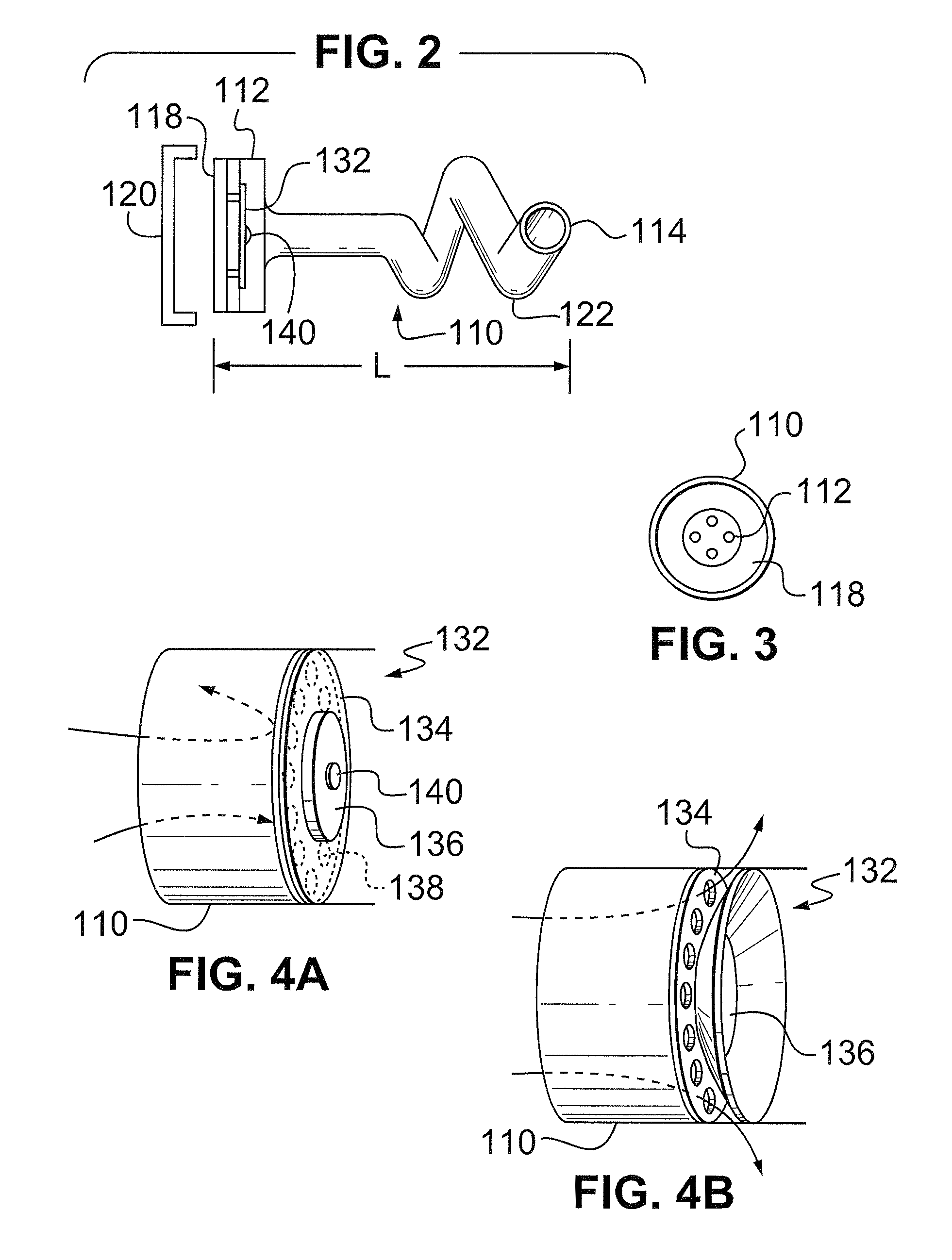Tracheostomy appliances and methods for the treatment of sleep apnea syndromes
a tracheostomy and sleep apnea technology, applied in the field of tracheostomy appliances and methods for the treatment of sleep apnea syndrome, can solve the problems of insufficient trans-thoracic pressure gradient, insufficient measurement reliability, and inability to overcome rising airway resistance, so as to prevent an undersirable increase in co2 level and minimal adverse effect on patient appearan
- Summary
- Abstract
- Description
- Claims
- Application Information
AI Technical Summary
Benefits of technology
Problems solved by technology
Method used
Image
Examples
Embodiment Construction
[0036]With the Background of the Invention in mind, and incorporated by reference herein, and with reference to the Drawings, the miniature embodiment of FIGS. 1-3, is described in conjunction with a method of treating an adult patient in health for sleep apnea.
[0037]Referring to FIG. 1, the method comprises the step of implanting in a tracheotomy, an appliance, such as a catheter 110, having a vent 112 with at least one distal port 114 communicating with the interior of the patient's trachea 116 and a proximal port 118. (As used herein, proximal is nearer to the implanting surgeon, and distal further from the implanting surgeon.) The distal port 114 is for the purpose of sensing intra-tracheal pressure, and the proximal port 118 is for sensing ambient atmospheric air pressure which, at sea level under standard conditions is 1000 mm Hg. In the illustrated embodiment, the vent 112 provides a small continuous flow path between the proximal and distal ports, 118 and 114.
[0038]A removab...
PUM
 Login to View More
Login to View More Abstract
Description
Claims
Application Information
 Login to View More
Login to View More - R&D
- Intellectual Property
- Life Sciences
- Materials
- Tech Scout
- Unparalleled Data Quality
- Higher Quality Content
- 60% Fewer Hallucinations
Browse by: Latest US Patents, China's latest patents, Technical Efficacy Thesaurus, Application Domain, Technology Topic, Popular Technical Reports.
© 2025 PatSnap. All rights reserved.Legal|Privacy policy|Modern Slavery Act Transparency Statement|Sitemap|About US| Contact US: help@patsnap.com



